Precautions for agriculture drone flight in night
Compared with the daytime, it is more suitable for agriculture drone operations in terms of temperature, humidity, and wind speed at night. Utilizing the night operation time is especially valuable for a limited plant protection operation cycle. When we are familiar with the precautions for night operation, we can carry out night operation safely and efficiently
Night work plot survey and planning The environmental survey before plant protection operations is extremely important. Only by knowing the operating environment can we avoid low-level mistakes in route planning and reduce the accident rate.
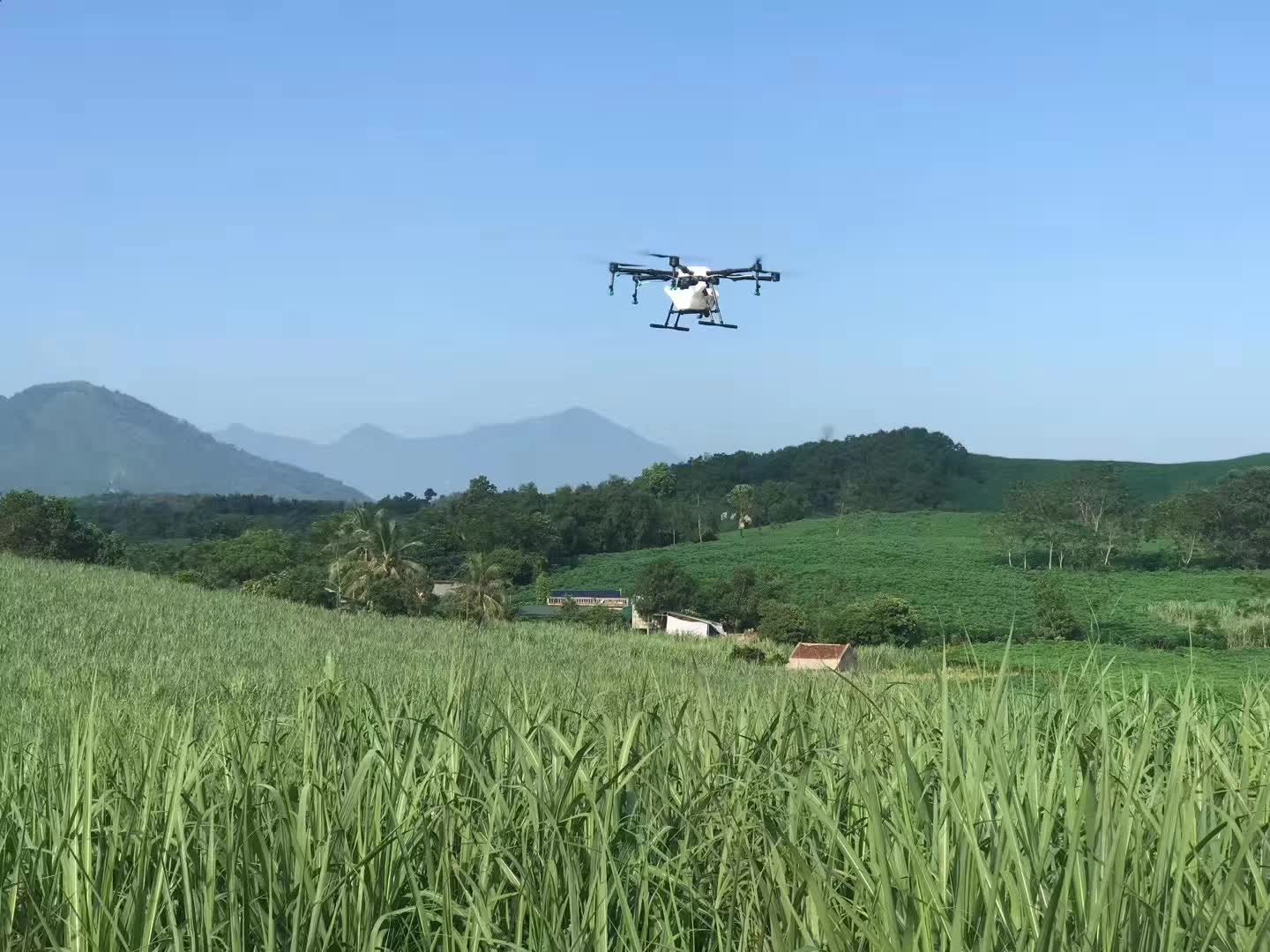
Operation environment survey
(1) Surrounding planting conditions Before operation, it is necessary to observe the surrounding crop planting conditions, whether there are sensitive plants such as mulberries, and avoid drifting phytotoxicity and poisoning accidents. It is necessary to check the characteristics and crop characteristics in advance, and confirm the safety before operation to avoid economic losses.
(2) Surrounding breeding situation If there is breeding situation surrounding the operation area, it may cause the possibility of poisoning and death of farmed livestock. If the operation is unavoidable, it is necessary to confirm whether the pesticide may be toxic to the livestock.
(3) When planning the obstacle field, carefully observe the obstacles inside and on the edge of the field, carry out obstacle planning, and avoid collision between the plant protection drone and the obstacle.
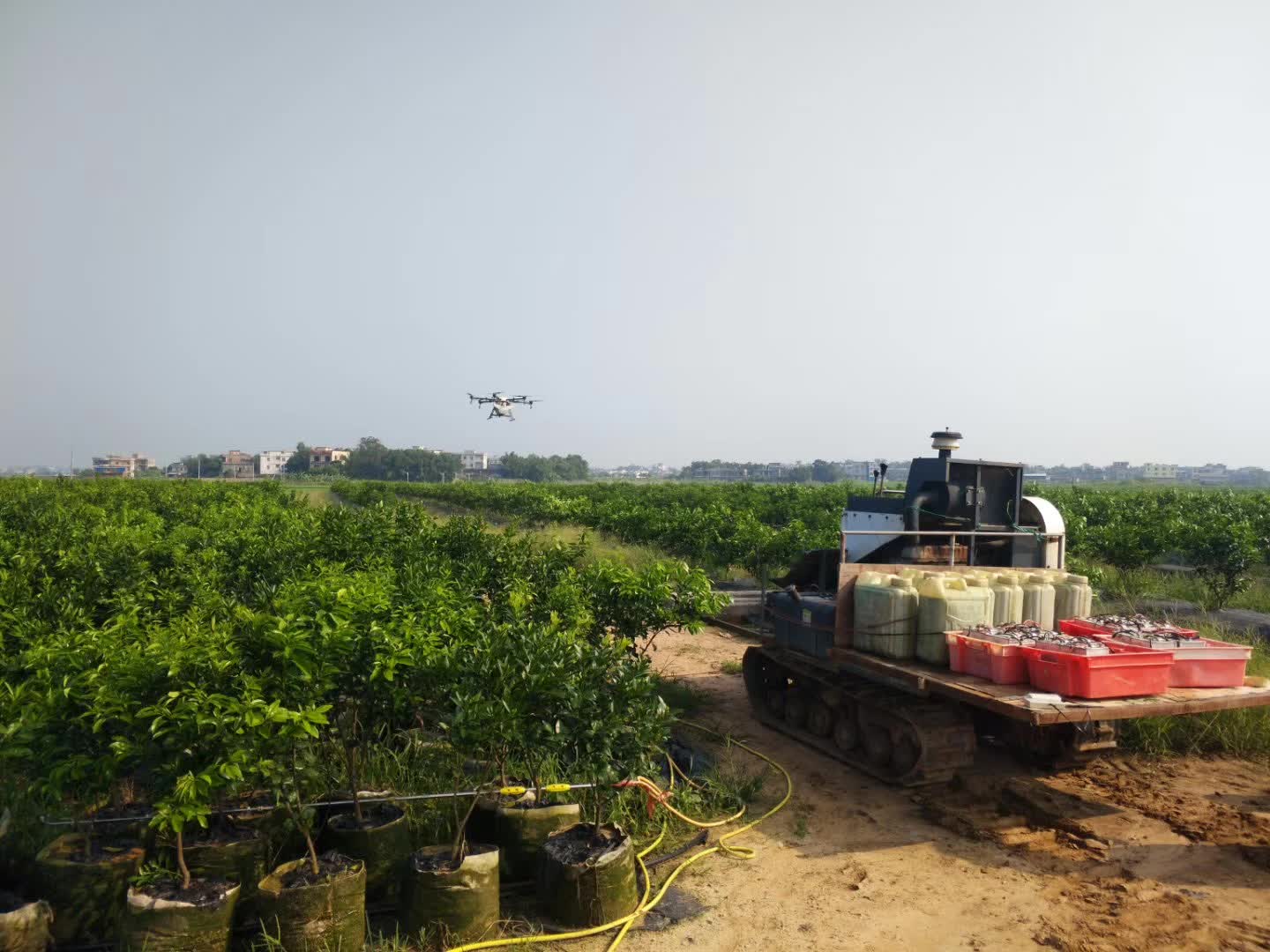
Plot and operation mode selection
Plot selection Due to the particularity of the night operating environment, it is necessary to give priority to the selection of regular and contiguous plots. For small plots and complex plots, the efficiency of autonomous flight at night is low and dangerous, and it is not recommended.
Plain standard field
After selecting the fully autonomous operation mode, after determining the operation fields, plan the fields in advance and select suitable take-off and landing points, and generally use the fully autonomous mode for operations. 2 Preparation for night plant protection operations
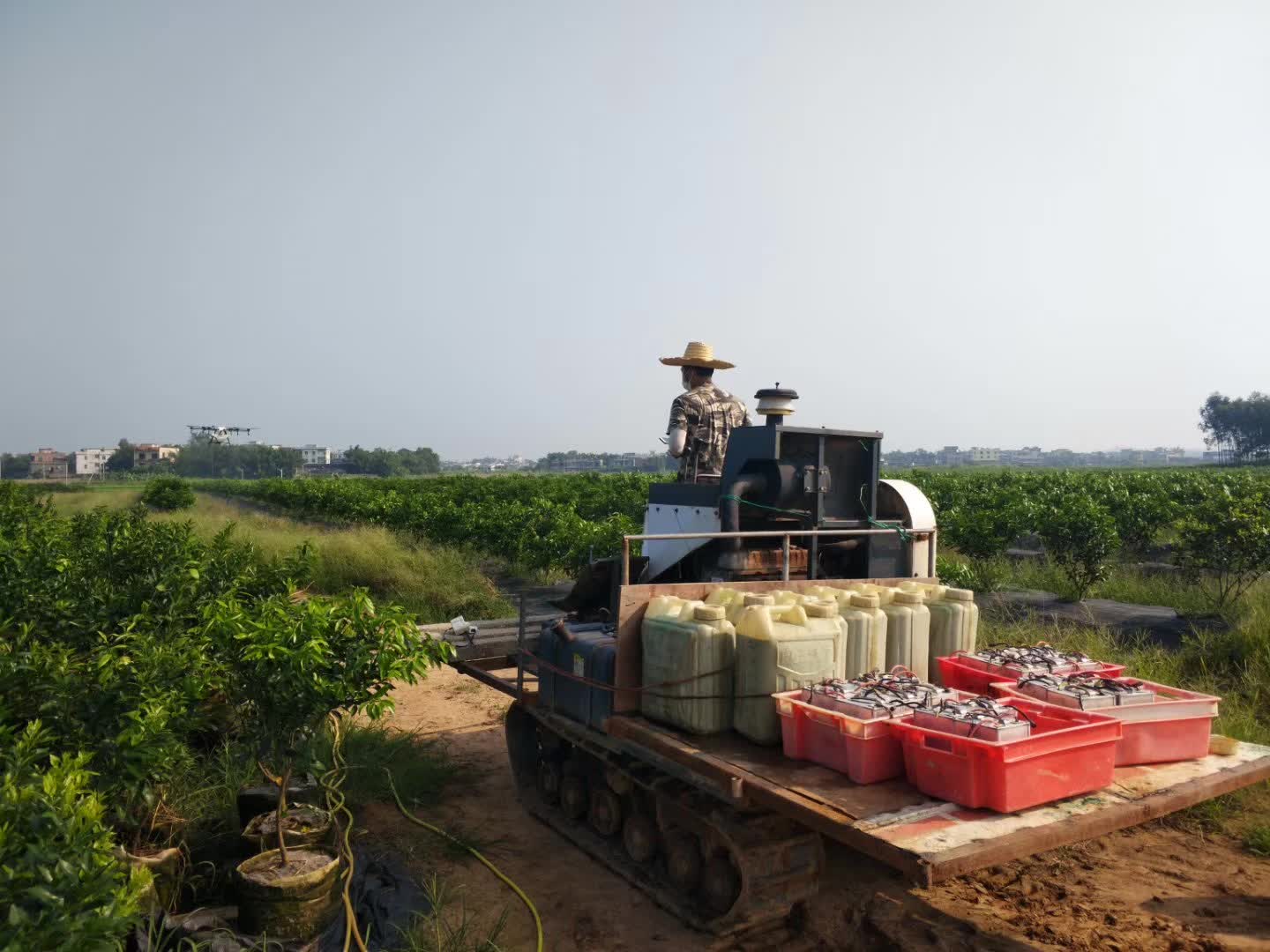
Equipment preparation
(1) Prepare night lighting to illuminate the take-off and landing area to facilitate take-off and landing, as well as replacement of batteries and medicine boxes.
(2) Operating equipment
battery
It is recommended to configure more than 5 pieces for each machine. If the number is too small, it may lead to insufficient battery protection or high-temperature battery damage.
generator
The generator is standard at night, and the generator is above 7000W, which can be used for two four-channel chargers.
Accessories
Such as propellers, sleeves, nozzles and other accessories, spare nozzles can be replaced when the fault cannot be eliminated.
Dispensing tools include:
Bucket, funnel (with strainer).
repair tool
Tools such as vise, hexagon socket set, scissors, toothbrush can be used to eliminate clogging of the nozzle.
Establish checklist to avoid forgetting to bring equipment
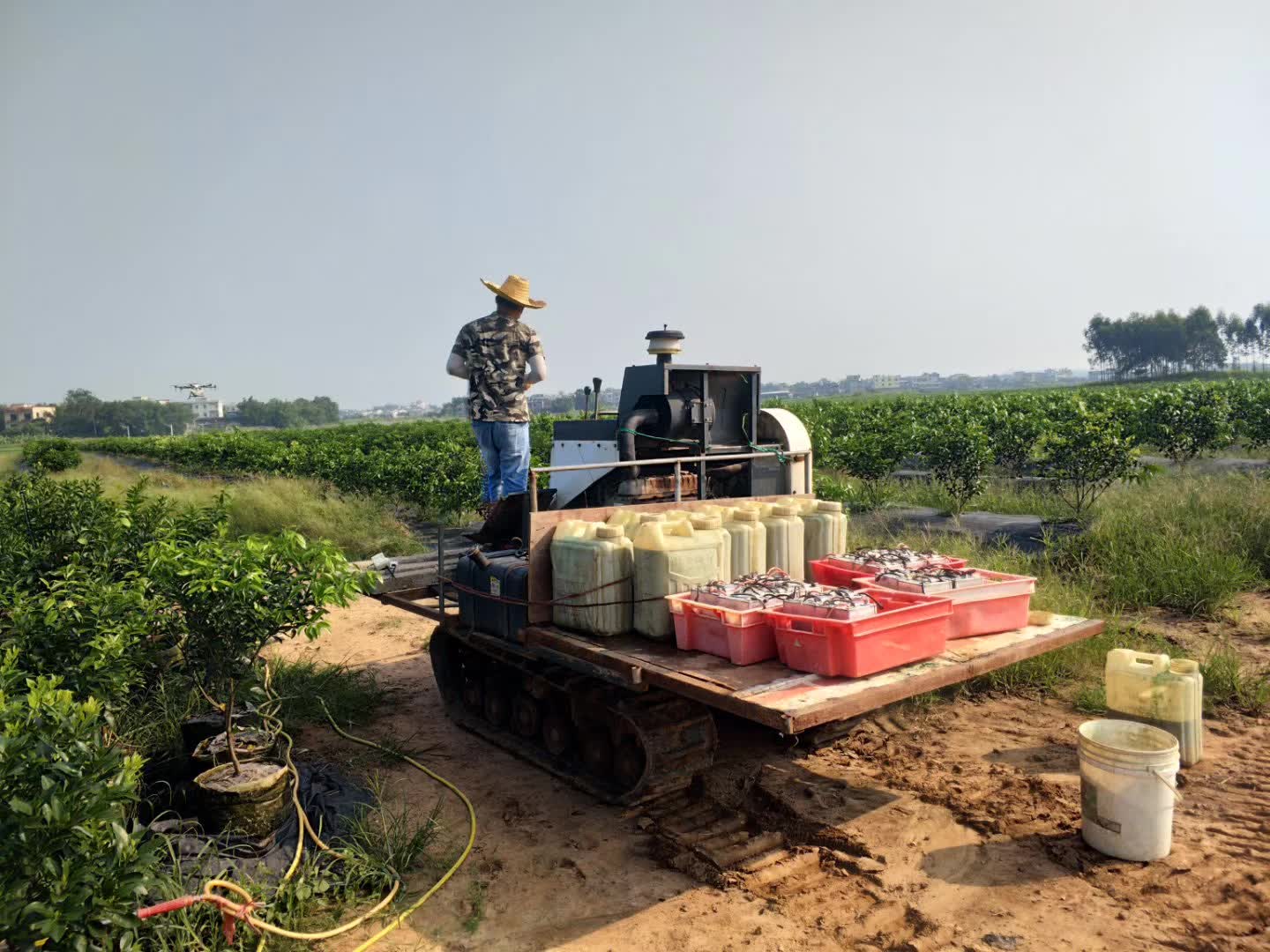
Personnel safety
(1) Operators should wear long clothes, trousers and stockings to reduce skin exposure.
(2) You should carry a flashlight or headlight for walking at night.
(3) Carry anti-mosquito water with you to avoid mosquito bites.
(4) Wear water boots to avoid water in your feet and stepping on poisonous snakes.
(5) Drive at night to avoid fatigue driving and speeding.
(6) The work area should be cleared before operation, otherwise the impact of the plant protection drone with ground personnel may cause serious injury. Plant protection drones need to maintain a safe distance of more than 5 meters from personnel.
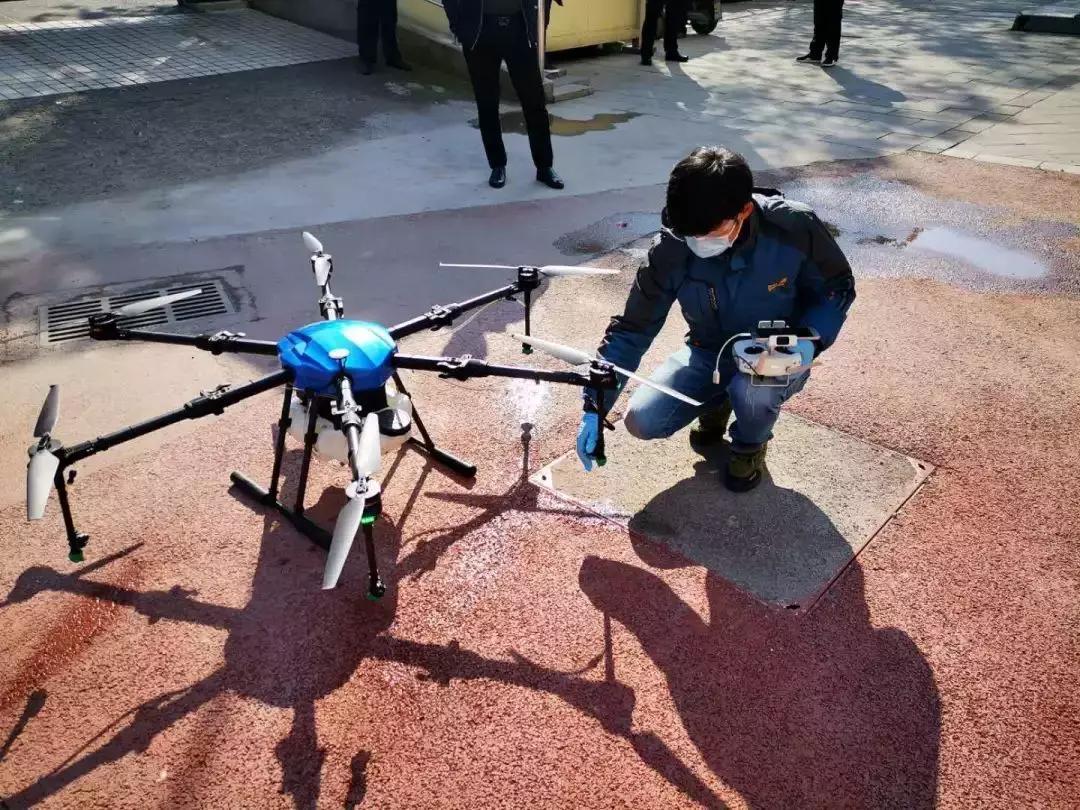
Agriculture drone takes off
How to ensure flight safety at night
(1) Remember to turn on the plant protection drone lighting and pay attention to the FPV screen. In the remote control APP settings option, turn on the lighting to illuminate the front area. Then by observing the FPV screen, you can clearly get the front Real-time images to better ensure flight safety.
(2) When replacing the battery, confirm that the battery is tightly locked and power on the agriculture drone at night.
(3) How to avoid obstacles hitting obstacles during take-off and landing During the day planning, determine in advance whether there are obstacles in the agriculture aircraft's take-off and landing point and the starting point of the operation. If there are wires above the take-off and landing point, set the height of the take-off point in advance to avoid The wires collide. Or manually unlock the flight to the starting point of the execution route, and when you reach the take-off point, slide to execute the task. (Recommended for veteran pilots with certain operating experience)
(4) How to judge the actual position of the agriculture drone in real time during operation. The remote control execution interface, the red triangle is the location of the plant protection drone, and the actual position of the aircraft is judged by observing the FPV camera screen. Access the satellite map to assist in judging whether there are obstacles at the boundary of the field, and be vigilant in areas with obvious obstacles.
(5) How to safely go to and from the operation interruption point. First of all, the AG. drone can be pulled back on the ground for dosing in advance through the prompt of the remote control drug interruption point or the remaining drug amount, so as to avoid the plant protection drone in the middle of the field. Medicine hovering. Secondly, manually pull back the plant protection drone through the trajectory of the already operating route. Pay attention to the altitude change when manually pulling it back. After that, you can use the one-key return operation. The return path is in a straight line from the medicine breaking point to the home point, ensuring that there are no obstacles and wires in the home point. If the site is too small, you can land manually.
Try to interrupt the operation on the side of the take-off point for dosing and battery replacement
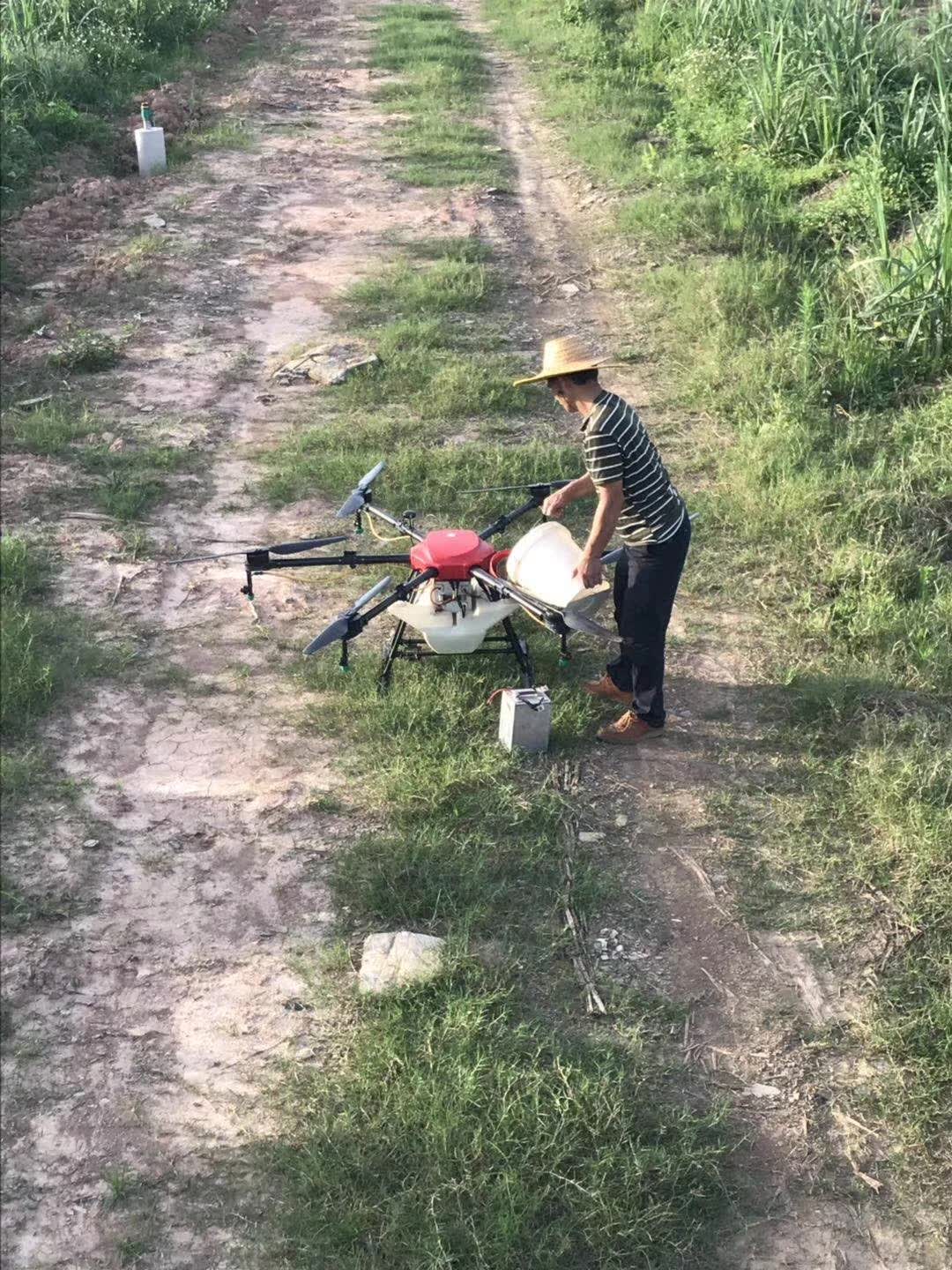
Daily maintenance of agriculture drones
(1) Fill the operation box with clean water or soapy water and spray it completely, and repeat the cleaning three times.
(2) Remove the filter of the medicine inlet, the filter at the bottom of the medicine box and the nozzle and clean them to ensure that they are not blocked.
(3) It is recommended to use a soft brush or damp cloth to clean the body, and then use a dry cloth to wipe off water stains.
(4) If there is dust or chemical liquid on the surface of the motor and the blades, it is recommended to clean the surface with a damp cloth, and then wipe the surface of the remote control and the display with a dry cloth (wrung out the water).
Hybrid power agriculture drone
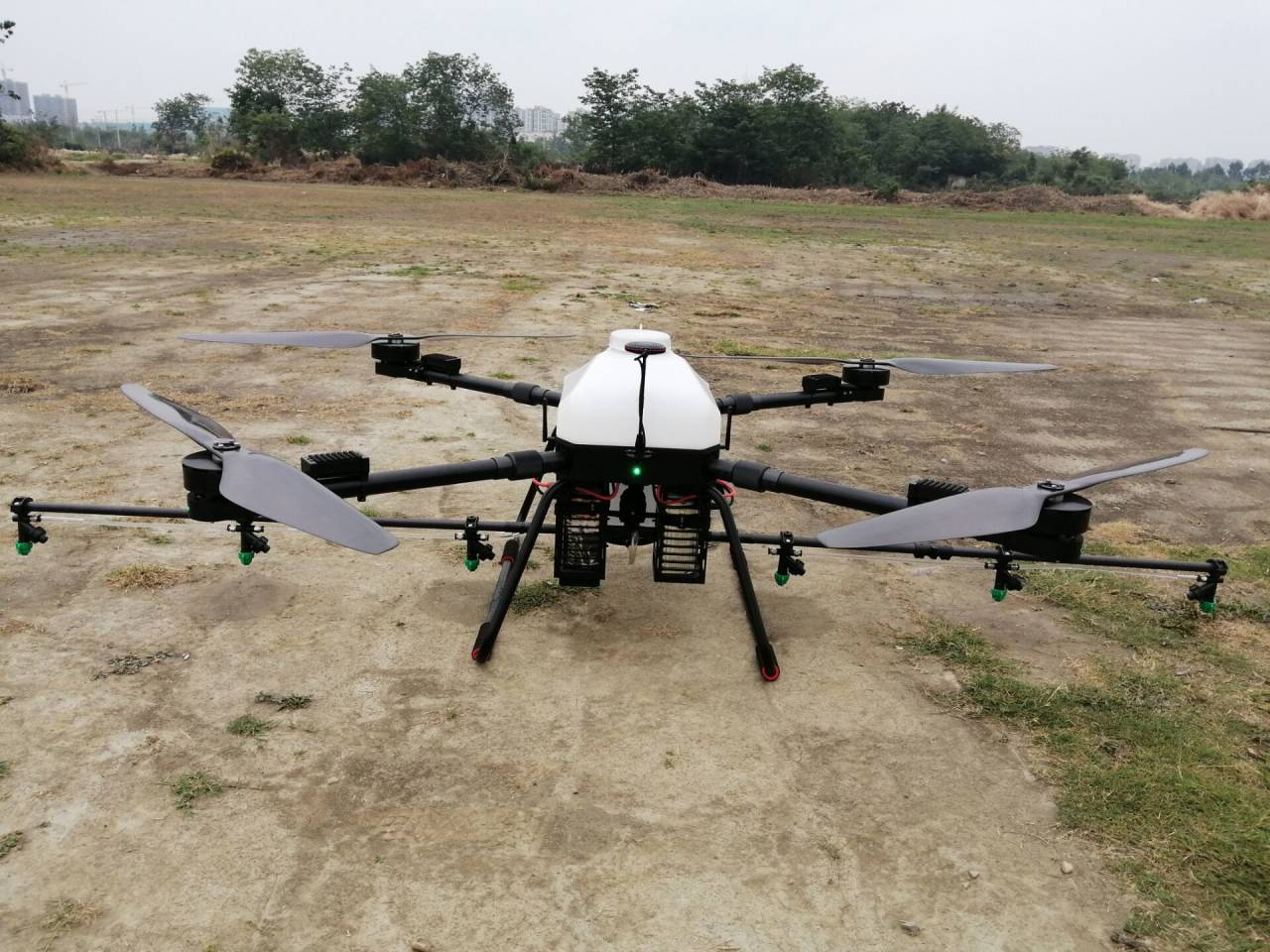
Product description
Number of axes:4 axis
Wheelbase: 1500mm
Power : 6000w Hybrid power
Medicine box vol1ume:max 16L
Fuel tank capacity : max 3.5L
Hybrid model: FL6000W
Full load flight time: 45 minutes
Weight:
1. Full load takeof weight: 40KG
2. Frame weight: 4.45KG
3. Hybrid powver weight: 7.2KG
4. Flight power system assembly weight: 4 * 1.65KG
5. Medicine bax weight: 1.5KG;
6. Fuel tank weight: 0.56KG










